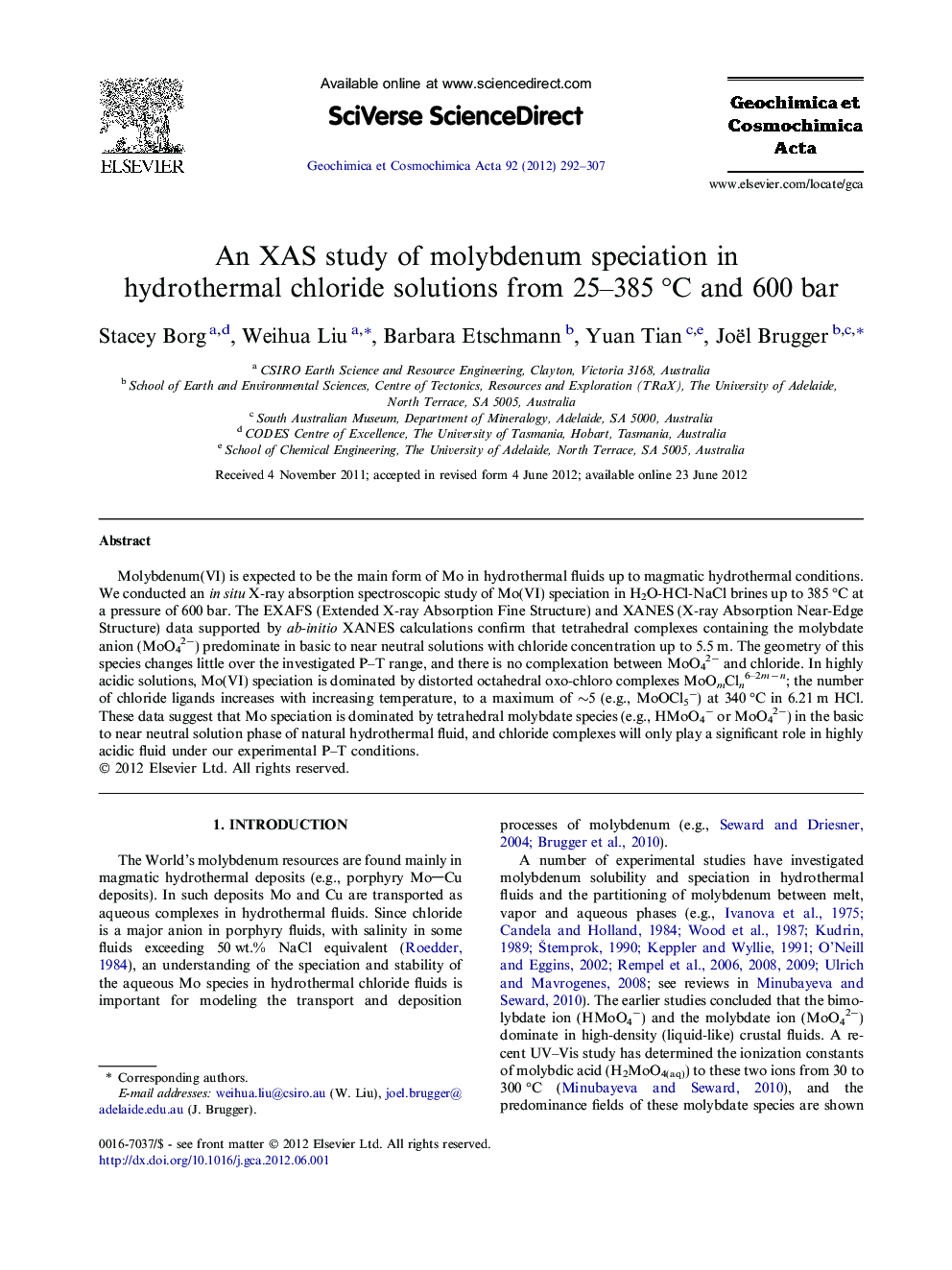| Article ID | Journal | Published Year | Pages | File Type |
|---|---|---|---|---|
| 4702802 | Geochimica et Cosmochimica Acta | 2012 | 16 Pages |
Molybdenum(VI) is expected to be the main form of Mo in hydrothermal fluids up to magmatic hydrothermal conditions. We conducted an in situ X-ray absorption spectroscopic study of Mo(VI) speciation in H2O-HCl-NaCl brines up to 385 °C at a pressure of 600 bar. The EXAFS (Extended X-ray Absorption Fine Structure) and XANES (X-ray Absorption Near-Edge Structure) data supported by ab-initio XANES calculations confirm that tetrahedral complexes containing the molybdate anion (MoO42−) predominate in basic to near neutral solutions with chloride concentration up to 5.5 m. The geometry of this species changes little over the investigated P–T range, and there is no complexation between MoO42− and chloride. In highly acidic solutions, Mo(VI) speciation is dominated by distorted octahedral oxo-chloro complexes MoOmCln6–2m − n; the number of chloride ligands increases with increasing temperature, to a maximum of ∼5 (e.g., MoOCl5−) at 340 °C in 6.21 m HCl. These data suggest that Mo speciation is dominated by tetrahedral molybdate species (e.g., HMoO4− or MoO42−) in the basic to near neutral solution phase of natural hydrothermal fluid, and chloride complexes will only play a significant role in highly acidic fluid under our experimental P–T conditions.
